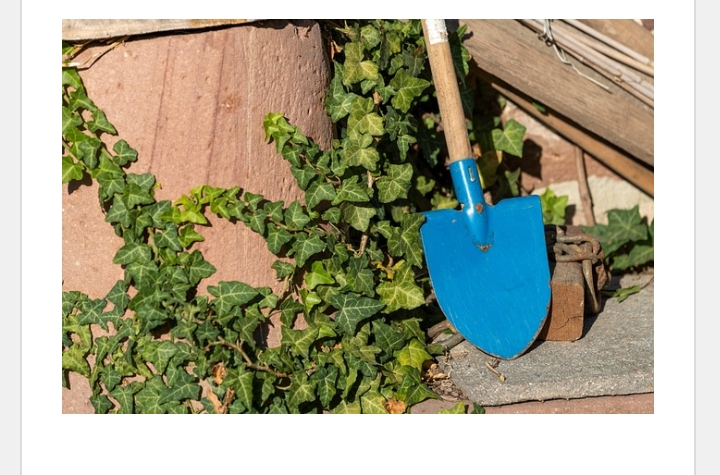Table of Contents
ToggleSubject: Vocational Aptitude
Class: Primary 1
Term: Second Term
Week: 10
Age: 5–6 Years
Topic: The Painter
Sub-topic: Who Is a Painter? What Do Painters Do? Tools Used by Painters
Duration: 40 minutes
Behavioral Objectives
By the end of the lesson, pupils should be able to:
-
Say who a painter is.
-
Mention at least three tools a painter uses.
-
Describe what painters do in simple words.
-
Recognize painted surfaces in their environment.
-
Appreciate the work of painters in beautifying spaces.
Key Terms and Definitions
-
Painter – A person who applies paint to walls, buildings, or objects.
-
Brush – A tool used to spread paint.
-
Roller – A round tool used for covering wide spaces with paint.
-
Ladder – A tall tool used to reach high places while painting.
-
Paint – A colored liquid used to coat surfaces.
Set Induction
Teacher walks in with a small paintbrush and a tin of paint.
Teacher: “Children, guess what I’m holding?”
Chidera: “A magic wand!”
Tunde: “No! That’s what they use to paint mummy’s wall!”
Teacher (smiling): “You’re both right in your own way. This tool brings magic to dirty walls!”
Class bursts into laughter.
Teacher: “Who has seen someone painting a house before?”
Hands fly up. Curious stories pour in. And just like that, the class is ready for an adventure.
Entry Behavior
Most pupils have seen painters at work in their streets or compounds. They’ve watched people climb ladders or open colorful tins. Today, we’ll build on that wonder.
Learning Materials and Resources
-
Real paintbrush and roller
-
A small tin of (empty) paint
-
Cardboard with drawings of a painter at work
-
Picture chart of painting tools
-
Crayons and paper
Background Knowledge
In every child’s world, painters are those fascinating people who come and transform boring old walls into something exciting. Some pupils may recall their room being painted or the school hall being redecorated for end-of-term parties.
During the renovation of our local community center, I volunteered to assist with the painting. Mr. Ade, the lead painter, was meticulous in his work. He explained how different colors can influence mood and how essential it is to prepare surfaces before painting. Working alongside him, I gained a newfound respect for the skill and knowledge painters possess.
Embedded Core Skills
-
Observation and inquiry
-
Communication and expression
-
Vocabulary development
-
Cultural appreciation
Main Content (Use Stories & Examples)
Who is a Painter?
A painter is someone who makes places look beautiful by adding colors to walls, doors, ceilings, gates, and even signboards. They help make our homes, schools, shops, and churches look bright and new.
Example:
When Aunty Ronke’s shop was painted yellow and orange last month, everyone in the street noticed it. Even Mama Nkechi said, “This shop looks like a mango smoothie now!” That’s the power of a good painter.
What Does a Painter Do?
Painters don’t just paint. They also:
-
Clean and prepare the wall or surface
-
Choose the right color
-
Use brushes, rollers, and ladders
-
Apply one or more coats of paint
-
Make sure the job is neat
Personal Story:
I remember one December when I was just six years old. My father painted our sitting room sky blue. That evening, I lay on the floor and said, “Daddy, it feels like the sky came into our house.” He laughed and said, “That’s the work of a painter, my dear.”
Tools Used by Painters
-
Paintbrush – Used to apply paint.
-
Roller – For large surfaces.
-
Ladder – To reach high walls.
-
Paint Tray – Where the roller gets dipped.
-
Scraper – To remove old paint before painting.
-
Overalls – Clothes to protect their body.
Classroom Story – Mr. Musa, the Local Painter
Mr. Musa, a painter from Adebayo Street, has been painting houses for over 20 years. One day, he came to our school to paint the library. He whistled a gospel tune as he painted. Chika asked, “Why is Uncle Musa singing to the wall?” I smiled and said, “Because he’s putting joy into every color.” The children giggled. But when the job was done, they all stood still—amazed by the beauty of their new colorful room.
Class Discussion (With Pupil Contributions)
Teacher: “Who has seen a painter before?”
Pupils: “Me!” “My uncle is a painter!” “They paint with bucket!”
Teacher: “What do painters use to paint?”
Seyi: “Brush!”
Anu: “That long one like rolling pin!”
Teacher: “Good! That’s called a roller!”
Activity – Fill-in-the-Gap (Multiple Choice)
Choose the correct answer.
-
A painter uses a __________.
a) spoon
b) brush
c) chalk
d) broom
Answer: b -
The color we put on the wall is called __________.
a) sugar
b) food
c) paint
d) oil
Answer: c -
__________ helps painters reach high places.
a) Chair
b) Ladder
c) Bench
d) Table
Answer: b -
Painters make our homes look __________.
a) dirty
b) ugly
c) beautiful
d) bad
Answer: c -
A painter is a person who uses __________ to decorate.
a) pencil
b) broom
c) paint
d) ruler
Answer: c
Theory Questions (Relatable)
-
Who is a painter?
-
Mention two things painters do.
-
Say two tools painters use.
-
Why do we paint walls?
-
Who painted your classroom (if known)?
-
What color do you like for a room?
-
What happens if we don’t paint a house for many years?
-
Do you know any painter in your community?
-
Can painters work alone or with others?
-
How do painters help during celebrations like Christmas?
Teacher’s Role
-
Bring real painting tools
-
Use storytelling and drama
-
Encourage pupils to share experiences
-
Create a fun, safe environment for learning
Pupils’ Role
-
Listen actively
-
Participate in storytelling
-
Answer and ask questions
-
Touch and observe materials
Assessment
-
Oral questions
-
Class discussion
-
Pupils draw a house and color it
-
Matching game of tools to their names
Conclusion
Every time a painter picks up a brush, they do more than color a wall—they bring life to it. Painters teach us that even the plainest things can become beautiful again. And today, maybe a little painter was born in our classroom.
The Goldsmith Vocational Aptitude Primary 1 Second Term Lesson Notes Week 8
The Electrician Vocational Aptitude Primary 1 Second Term Lesson Notes 9
Related posts:
- Revision of First Term Topics Vocational Aptitude Primary 1
- Occupations in Our Community – The Carpenter Vocational Aptitude Primary 1
- The Bricklayer – Vocational Aptitude Primary 1, Second Term, Week 7
- The Goldsmith Vocational Aptitude Primary 1 Second Term Lesson Notes Week 8
- The Electrician Vocational Aptitude Primary 1 Second Term Lesson Notes 9













